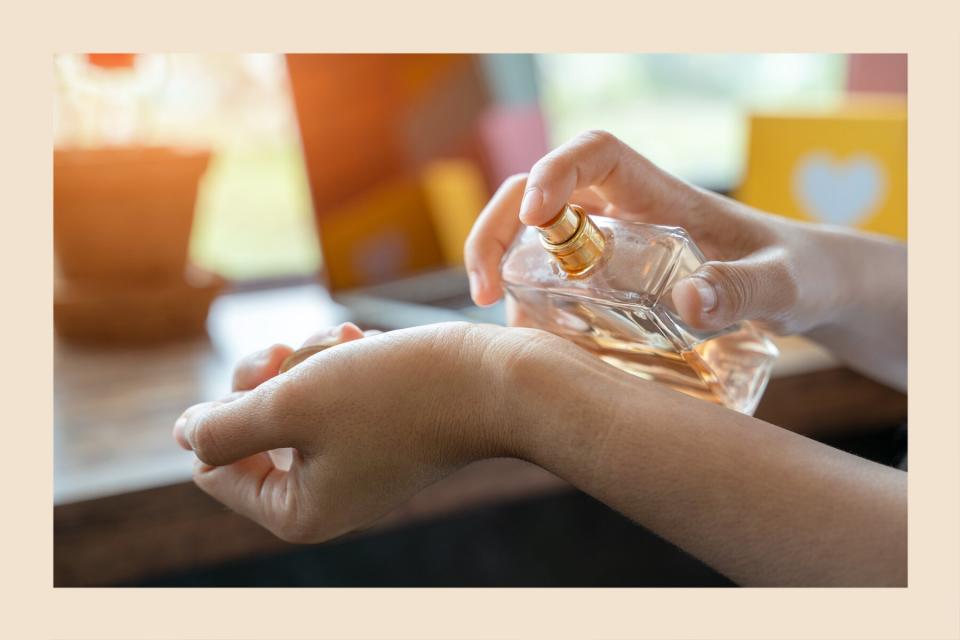We Know About Clean Beauty, But What's the Deal With Clean Fragrance?

Getty Images
Love it or hate it, fragrance can be found everywhere in the beauty space, from skincare to perfume. But while it provides a pleasant sensorial experience, fragrance has also been demonized as a sensitizing ingredient that can trigger irritation. I'm sure we can all think of a few influencers that espouse the virtues of avoiding fragrance, but what about "clean fragrance"? Is a "clean fragrance" better for your skin?
The U.S. Food and Drug Administration (FDA) defines fragrance as a combination of ingredients that are blended to give a product its distinct scent. The trickier term, in this case, is "clean" as it's not regulated. This means that brands can leave it up to their discretion how they define their clean beauty products—and how they can market them.
Now, that's not to say that the FDA doesn't have regulations in place for cosmetics—it's just that the regulations are loose. Beauty brands don't need pre-market approval from the FDA to start making and selling products, and the only things product manufacturers need to do are to accurately label their products and to substantiate that their products are safe through scientific research, supplier data, safety data, or toxicology testing. As a result, the idea of a "clean fragrance" is kind of nonsensical as there's no hard definition of "clean."
What is clean fragrance?
Cosmetic formulator Krupa Koestline explains that for most brands, "clean" means a product is free from certain ingredients, such as sulfates, but clean means something different to every brand and person. For Free People, its beauty team chooses to formulate with their ingredients as close to their natural origin and state as possible. "We believe Mother Earth offers us the most extraordinary scents naturally, so we wanted to bottle those aromas as close to their origin as possible versus using any synthetic, man-made ingredients," explained a spokesperson for the brand over e-mail.
Sounds easy, right? Wrong. "This can be challenging from a formula perspective as there are only around 800 raw materials to work with that are considered natural, versus over 3,000 raw materials to work with if you use synthetic ingredients such as phthalates and animal-derived ingredients," explains the Free People spokesperson. "It's important for us to know where each ingredient comes from, how it's processed, and how it's manufactured—like with extraction, steaming, or distillation. This kept the formula extremely pure and clean, from our standpoint."
- 78 Available at Free People
For Koestline, "clean" is about transparency. "Traditional perfumes do not have to list their ingredients as fragrance houses aren't required to disclose what chemical compounds are used to create the fragrances," she says. "To me, a perfume would be considered clean if it has ingredient transparency." It's that reality that prompted Michelle Pfieffer to launch her clean fragrance brand, Henry Rose, in 2019.
- 120 Available at Henry Rose
Is clean fragrance better than traditional perfume?
Koestline says that a "clean fragrance" may not be more sustainable, or better, for you and the environment compared to fragrances made with synthetic compounds. Brands agree, too. Despite opting to create clean fragrances, Free People says that they're not necessarily safer than traditional perfumes. "There are plenty of safe synthetic raw materials that are used in perfumes and cosmetics; we just chose to experiment with all-natural ingredients," says its spokesperson. So, at the end of the day, the fragrance you wear should align to your lifestyle and scent preferences, not whether or not a perfume is marketed as "clean."
Available at BlueMercury

 Yahoo Sport
Yahoo Sport 





































